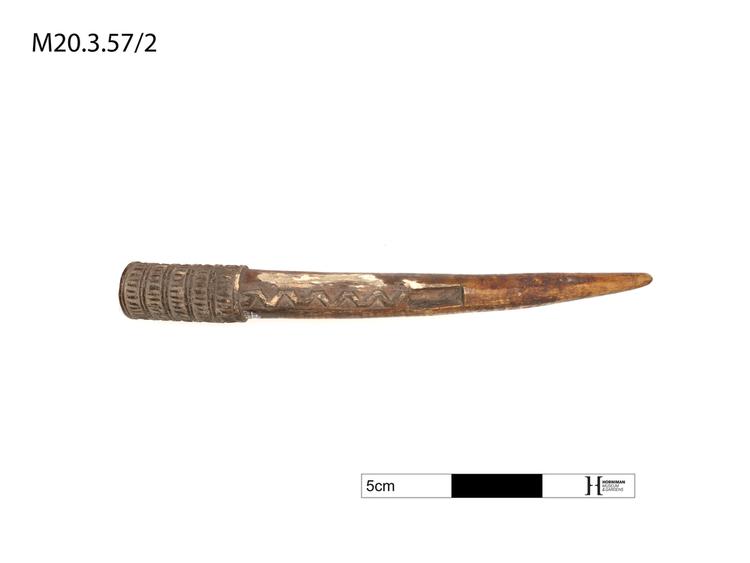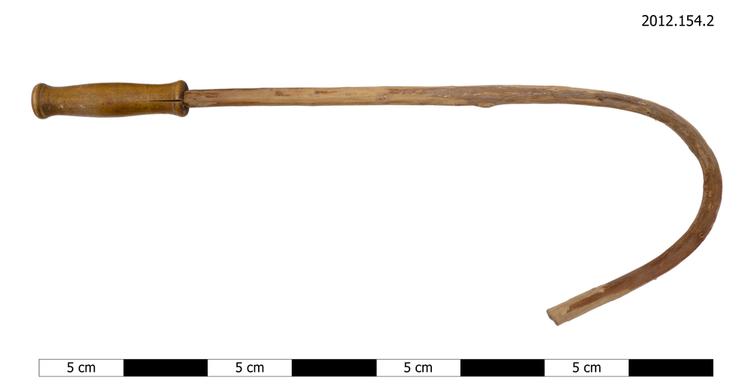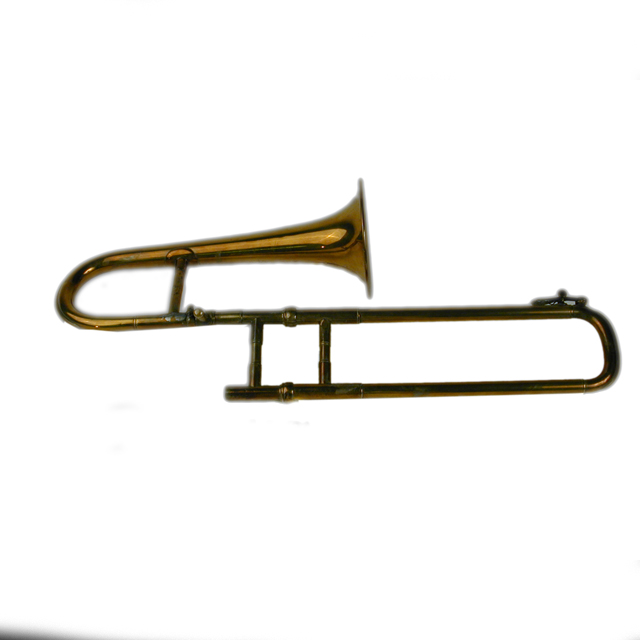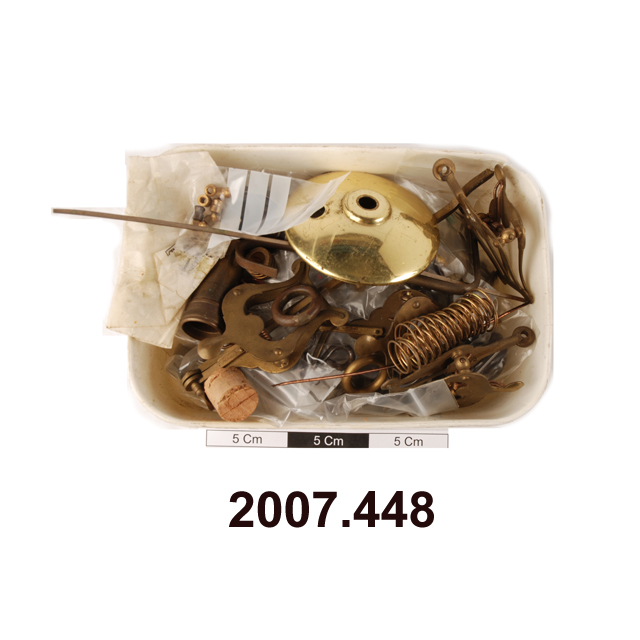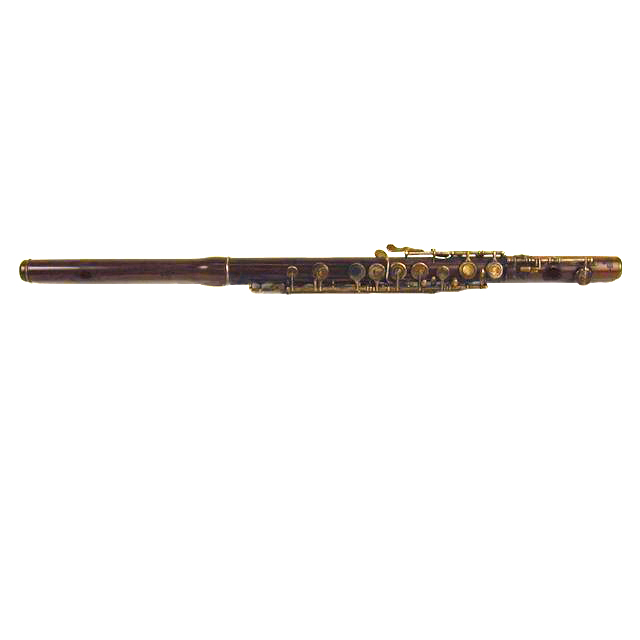
Flute, Radcliff system of 1870. Card index reads: Flute in D. RUDALL, CARTE & Co., 23 Berners Street, Oxford St., London. Mr. Harold Osborne, 90A St. Johns Wood High Street, London, NW8 (gift). Numbered 174, with crown mark, and marked "Radcliff's Model". Cocus: Radcliff system: silver plated keys: closed G sharp. Cylinder bore. Late 19th-early 20th century. Cover plate of C sharp foor [sic.] missing. Generally in sound condition but not in working order and mechanism needs much attention. Length overall: 662 mm, do. s. to f. 597 mm, do. m/h to f.: 583 mm; bore at head joint: 20 mm, at foot.: 19.5 mm. Transverse flute, nominal pitch C. Wood. with Radcliff key system. The body is of cocuswood in three joints with silver-plated keys and ferrules. The keys are pillar mounted with axle rods. The pillars are mounted on plates with square ends, which run the length of the axles. There is a closed G sharp key. The head joint has an oval-shaped embouchure. Cylindrical bore. There are ferrules beneath the wooden end cap, at head joint socket, at foot joint socket and foot rim. The pillar for the foot joint E flat key axle is attached to socket ferrule. The cover plate of the C sharp foot key is missing.
A radical change took place in the design of Western European flutes in the mid-nineteenth century. The instrument's projection and roundness of tone were substantially improved by a key system developed by Theobald Boehm. However, the system required players to learn new finger combinations, and a number of transitional designs were developed to ease the process. The key system on this instrument was invented in 1870 by John Radcliff, a British flautist and inventor. The keys for the left hand are similar to the new Boehm system, while the keys for the right are based on the earlier (and more familiar) simple system. Radcliffe wrote of his design: 'I am aware that there are still many Flute Players trembling on the verge of a transition from the old to the new class of Flutes, desiring, but hesitating whether or not to take this step…To all such I may not be considered presumptuous if I hold out my hand and say, follow me. I have gone through all your experience, have stepped over the stream before you, and have now planned a bridge by which you may pass over still more easily.'



